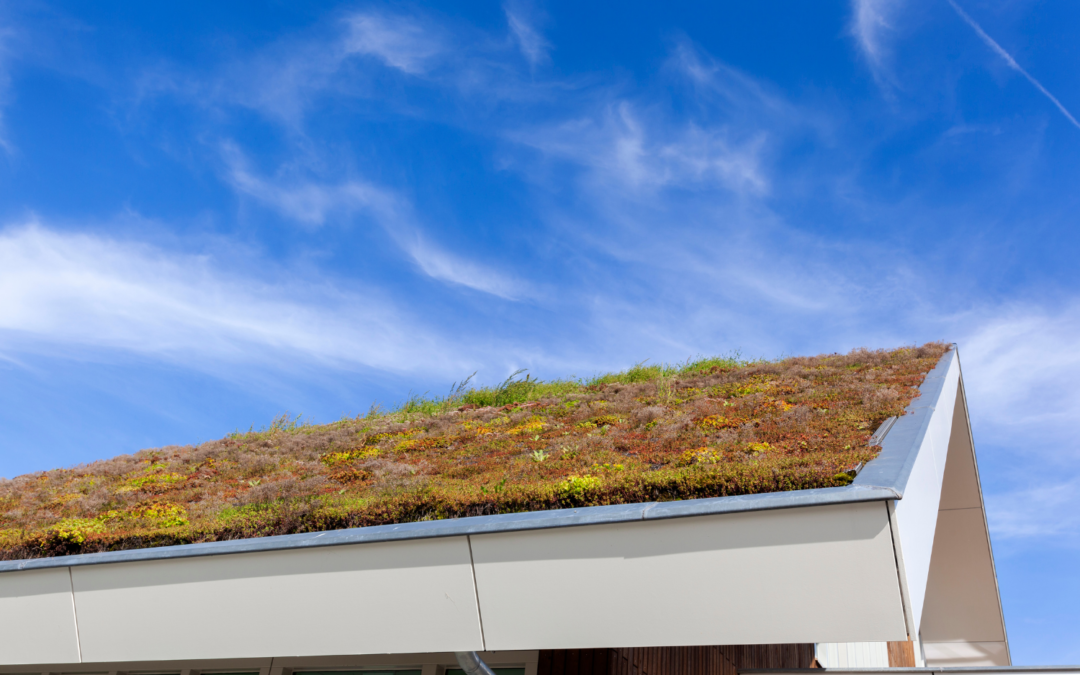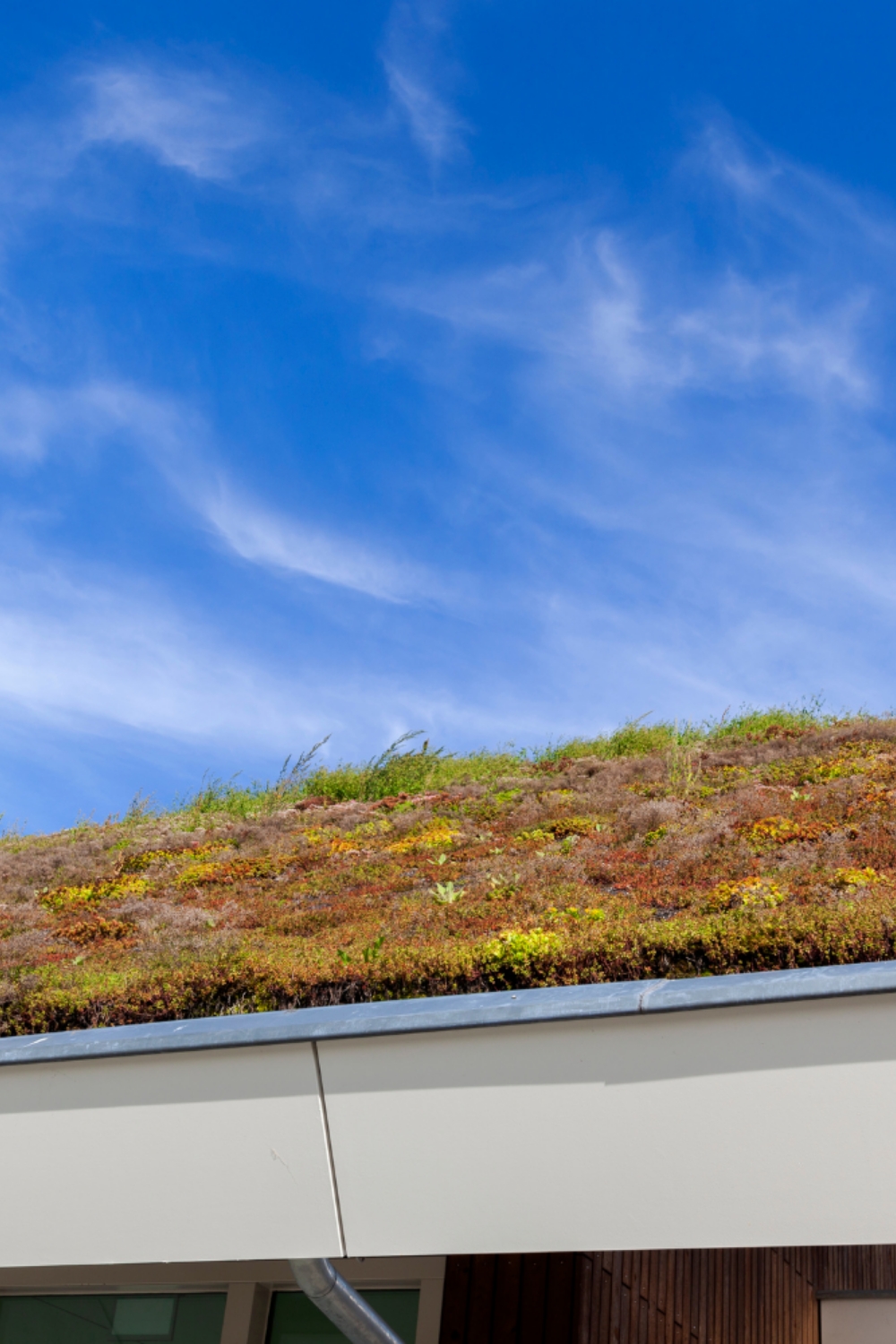Green roofs are revolutionizing building design and infrastructure; using the power of nature to mitigate the effects of urban development and helping to protect the environment.
First, a quick definition of a green roof. It is basically a carefully constructed garden sitting on the roof of a building. Green roofs differentiate from rooftop gardens because they aren’t just flowers in pots; they have been engineered to function in a way that helps the environment.
The substrate materials and plants are carefully selected such that they will grow well in the surrounding environment. These must be placed within an impermeable layer (usually a geosynthetic textile) so that water doesn’t leak into the buildings below, and a good drainage system also needs to be installed.
The main reason green roofs were originally designed was to increase rainwater infiltration in urban areas and reduce the impacts of storms. Green roofs help the environment in three key ways:
- Stormwater management
- Reduce pollution
- Promote a greener, more sustainable way of living.
Urban development has meant that much of what was once grass and trees are now buildings and roads. Among other things, this has led to a drastic reduction in the infiltration capacity of the land. Infiltration is when rainwater flows down through the soil into either groundwater aquifers or underground streams, which lead eventually to the sea.
This natural process is vital for recharging underground drinking water supplies, a problem many rapidly developing cities are already facing. If the rainwater can not infiltrate the ground, it becomes surface run-off. High levels of surface run-off are really bad for urban areas. It increases the intensity of storms, leading to more flooding and possibly damage to pipes and stormwater catchment areas.
It also poses long-term health risks. Rainwater can pick up particulates like heavy metals or pesticides and carry them through the water cycle, which could eventually contaminate drinking water supplies. Hence, the use of green roofs! The soil in the green roof is permeable so water can infiltrate it, and the plants also help stabilize the water cycle by increasing transpiration rates.
Studies show that having green roofs, along with other “green infrastructure” like permeable pavements, in an urban development significantly reduces surface water run-off and prevents storms from being more damaging than they could be.
Another way in which green roofs help the environment is that they can reduce, to a limited extent, water, noise, and air pollution.
Rainwater contains nasty contaminants that can cause health problems or structural damage (corrosion from acid rain, for example). However, when the rainwater passes through the soil, many of the particulates are trapped, and cleaner water filters through. Plants can uptake most minerals without any adverse effects so they are a good end-point destination for contaminants (as long as you don’t eat the plants raw!)
The plants and soil bed also have a dampening effect on noise, so it can help reduce the noises around the building. This makes the green roof a safe place for birds and other animals, and it’s also good for people who want to escape the hustle and bustle of the city below. Green roofs also reduce air pollution because plants absorb carbon dioxide.
This makes them a very popular tool for getting a building to have a net-zero carbon emission. Admittedly, green roofs don’t absorb nearly enough carbon dioxide to substantially affect the net carbon emissions in urban cities, but they do help a little.
More importantly, I think the really great benefit of green roofs is that they are just plain cool. The plants are pretty; the air is fresh; it turns a mundane grey rooftop into a nice quiet place to chill out during a lunch break.
Basically, it’s an awesome advertisement for the green revolution; showing everyday people that living sustainably and helping the environment doesn’t have to be hard, expensive or a huge time commitment. Spreading this message is the key to getting more people interested, and this in turn will bring about the big changes that we really need to help save the environment.



